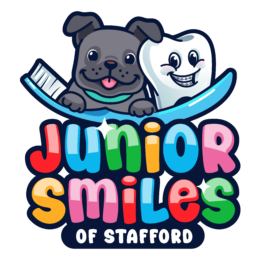How to Fix Crossbites in Children

As parents, we understand the immense responsibility of safeguarding our child’s oral health. It is only natural to experience doubts and fears, mainly when unfamiliar terms like ‘crossbite’ are introduced into the conversation. If you have recently received information or have concerns about your child potentially having a crossbite, it is natural to have many questions. While the task of finding a solution for your child’s crossbite may initially appear overwhelming, we want to assure you that it is far more manageable than it may seem.
This piece will provide information and advice to help you deal with this challenge head-on. If your child has a crossbite, you’ll better understand the condition, its potential consequences, and, most importantly, the most efficient means of how to fix a crossbite in children. Keep on reading!
What is a Crossbite?
A crossbite is a type of malocclusion or misalignment of teeth. It occurs when the upper teeth overlap the lower teeth rather than fitting over them. One or more teeth can be affected, and it can happen on either side of the mouth.
What Causes a Crossbite?
Genetics
Genetic factors play a significant role in the shape and size of your jaws, and the position and size of your teeth. If parents or grandparents had a crossbite or other dental issues, their children might be more likely to have them too.
Size of the Jaw
A mismatch in the size of the upper and lower jaws can result in a crossbite. For example, if the upper jaw (maxilla) is too narrow and the lower jaw (mandible) is of regular size or vice versa, a crossbite can develop.
Congenital Conditions
Congenital conditions refer to disorders or abnormalities that are present at birth. They can be inherited or can result from environmental factors or a combination of both.Some congenital conditions, such as cleft lip and palate, can cause structural abnormalities in the jaw and mouth, leading to a crossbite.
Delay in Losing Baby Teeth
Primary (baby) teeth serve as placeholders for permanent teeth. If there’s a delay in losing these baby teeth or if they’re lost prematurely, it can interfere with the proper eruption and alignment of the permanent teeth. This condition is called over-retained baby teeth, which can cause a crossbite in one or more teeth.
Thumb Sucking
Prolonged thumb sucking, especially beyond the toddler years, can influence the shape and growth of the jaw and the positioning of the teeth. This habit can contribute to the development of a crossbite, particularly an anterior crossbite (involving the front teeth).
Pacifiers
Using a pacifier for extended periods, especially beyond toddler years, can have similar effects on dental and jaw development as thumb sucking. When used after age three, pacifiers increase the risk of developing a posterior crossbite. It might be helpful to avoid changes in the palate if you help your child cease thumb-sucking or using a pacifier by the age of 2 or 3.
Mouth Breathing
This behavior can cause structural changes to the face, including the narrowing of the upper jaw and the subsequent possibility of crossbite. Children who breathe through their mouths often have a greater risk of developing a disproportionately tiny upper jaw.
Importance of Correcting Crossbites in Children
Improved oral function is a common positive effect of treating a crossbite. This implies that kids will have an easier time chewing and talking. By helping your child with this early on, you will also encourage healthy jaw growth. This also aids in the future avoidance of facial asymmetries and functional problems.
Furthermore, early treatment for crossbites can avert more significant dental problems like TMJ syndrome, irregular tooth wear, and bone loss. Having a crossbite fixed also simplifies practicing excellent oral hygiene, reducing the risk of cavities and gum disease. Aligning teeth benefits oral health because crooked teeth trap food and plaque in hard-to-reach places.
Types of Crossbite
It’s important to understand that crossbites can be classified into two primary categories: anterior and posterior.
Anterior Crossbite
An anterior crossbite, commonly known as an underbite, is a dental condition where the upper front teeth are positioned behind the lower front teeth when the mouth is in a closed position. Dental issues can manifest in either a single tooth or a cluster of teeth.
Posterior Crossbite
A posterior crossbite is a dental condition characterized by the misalignment of the upper back teeth, which sit inside the lower back teeth rather than resting slightly over them. Crossbite, a common dental condition, can occur on either one or both sides of the mouth.
Crossbite Treatment Options for Children
When correcting crossbites, orthodontic practitioners have a wide array of orthodontic devices. The effectiveness of treatment for a crossbite can vary depending on the specific type and severity of the condition.
Braces
Both metal and transparent braces can correct a minor posterior or anterior crossbite. Rubber bands will be used with the braces to provide the necessary correction force for bringing the upper and lower arch into healthy alignment.
Banded Expander
This type of expander is held in place by the rear teeth, providing the best opportunity for dental hygiene and the lowest overall cost. Semi-permanent expanders have several advantages over detachable ones, including a faster treatment period and more consistent long-term outcomes.
Bonded Expander
When a large amount of gum tissue covers the upper teeth, making it impossible to place a banded expander, bonded expanders are utilized instead. The initial set of permanent molars and the baby teeth are protected by acrylic in this treatment. Like the banded expander, this expander is only partially detachable, but it provides more stable results in a shorter amount of time.
Fixing Crossbites in Children FAQs
How long does it take to fix a crossbite?
The recovery time from a crossbite might be substantial. Depending on your child’s crossbite severity, treatment might take anywhere from 18 months to three years. When the upper jaw is not given enough time to heal after removing the expander, it returns to its standard size. After the last turn is finished, the bones need about six months to develop before being safely removed. Getting your child to the dentist as soon as possible may prevent much pain and suffering in the long run by correcting a crossbite.
What happens if a crossbite is not corrected?
Children who don’t get their problems fixed may develop issues with their face, teeth, muscles, or joints as adults. Physical and mental maturation are disrupted as well. Worn teeth, uneven jaw development, an escalation of misalignment, and a shaky bite are additional consequences of these problems.
At what age do you correct a crossbite?
The typical age for starting therapy for a crossbite is 6. As a result, it’s essential to watch for any indicators of pain in your child’s mouth or jaw as early as age 3. If this malocclusion is not corrected with orthodontic equipment throughout childhood or adolescence, it might develop into a significant issue requiring surgery in early adulthood. They would require both surgical correction and orthodontic treatment.
Read more: What Should You Do When Capped Baby Teeth Fall Out?
Book a Consultation with Our Pediatric Dentists Today
Crossbites in children, though a common dental issue, should not be overlooked. Addressing them at an early stage can prevent more complicated problems down the line, ensuring your child’s dental health and confidence remain intact.
At Junior Smiles of Stafford, our skilled pediatric dentists employ the latest techniques and technologies to correct crossbites, ensuring a smooth, efficient, and child-friendly experience. Every child deserves a perfect smile, and we’re here to help them achieve it. If you’re concerned about your child’s dental alignment or have questions about potential treatments, don’t hesitate.
Book a consultation with our pediatric dentists today and let us guide you on the path to optimal oral health for your little one.

